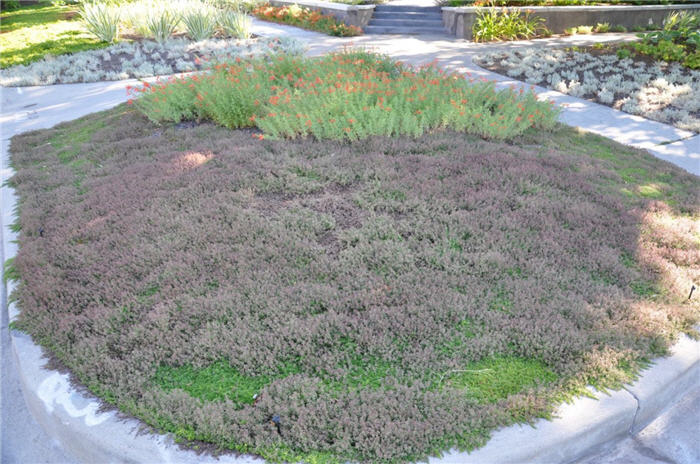| Botanical Name: Thymus serpyllum coccineus | |
| Common Name: Red Mother-of-Thyme |

-
Anatomy
-
Culture
-
Design
Plant Type
Ground cover, Perennial, Herb
Height Range
Under 1'
Flower Color
Purple
Flower Season
Spring, Summer
Leaf Color
Dark Green
Bark Color
n/a
Fruit Color
n/a
Fruit Season
n/a
Sun
Full
Water
Low
Growth Rate
Moderate
Soil Type
Sandy, Clay, Loam
Soil Condition
Average, Rich, Poor, Well-drained, Dry
Soil pH
Neutral
Adverse Factors
Attracts Bees
Design Styles
English Cottage, Formal, Japanese, Meadow, Mediterranean, Ranch, Spanish
Accenting Features
Fragrance, Showy Flowers
Seasonal Interest
Winter, Spring, Summer, Fall
Location Uses
Entry, Perennial Border, Shrub Border, Foundation, Parking Strip, Patio, Raised Planter, Walkways
Special Uses
Container, Mass Planting, Lawn Alternative, Small Spaces
Attracts Wildlife
Butterflies
Information by: Stephanie Duer
Photographer:
Photographer:
-
Description
-
Notes
Red Mother-of-thyme is a very showy thyme, with its profusion of rosy-red flowers in summer. Plants form thick mats of tiny, luscious green foliage, and though its evergreen, the foliage turns bronze in the fall. A wonderful low-water, low maintenance groundcover to use in place of low-use lawns or for between pavers. Grows about 2 to 3 inches tall and spreads about 12 to 18 inches wide.
Grow in full sun and well drained soil. Though it will tolerate some shade, its growth may not be as vigorous or dense. Though vigorous, it will not overtake taller perennials and so is well suited for borders. Excellent in sunny parkstrips or as an alternative to lawn, provided its not one that gets played on. Mix a variety of thymes and veronicas for an interesting groundcover quilt. Does not require deadheading or fertilizing, though it can be mowed in early spring, if necessary, to make it tidy.